Imagine stepping out into your backyard and being greeted by a modern oasis that reflects your style and meets your needs. Whether you’re new to outdoor projects or a seasoned pro, “14 Modern Backyard Structures Ideas for Your Next Project” is your go-to guide for inspiration and transformation. This carefully curated list will spark your creativity, offering both innovation and practicality to elevate your outdoor experience.
From enhancing your entertainment options to creating serene retreats, the ideas in this guide promise to revolutionize your outdoor living space. You’ll discover the joy and satisfaction of crafting a backyard that not only looks stunning but is functional and inviting. Get ready to confidently embark on an exciting journey to make your outdoor dreams a reality, one structure at a time!
Incorporate Multi-Functional Pergolas
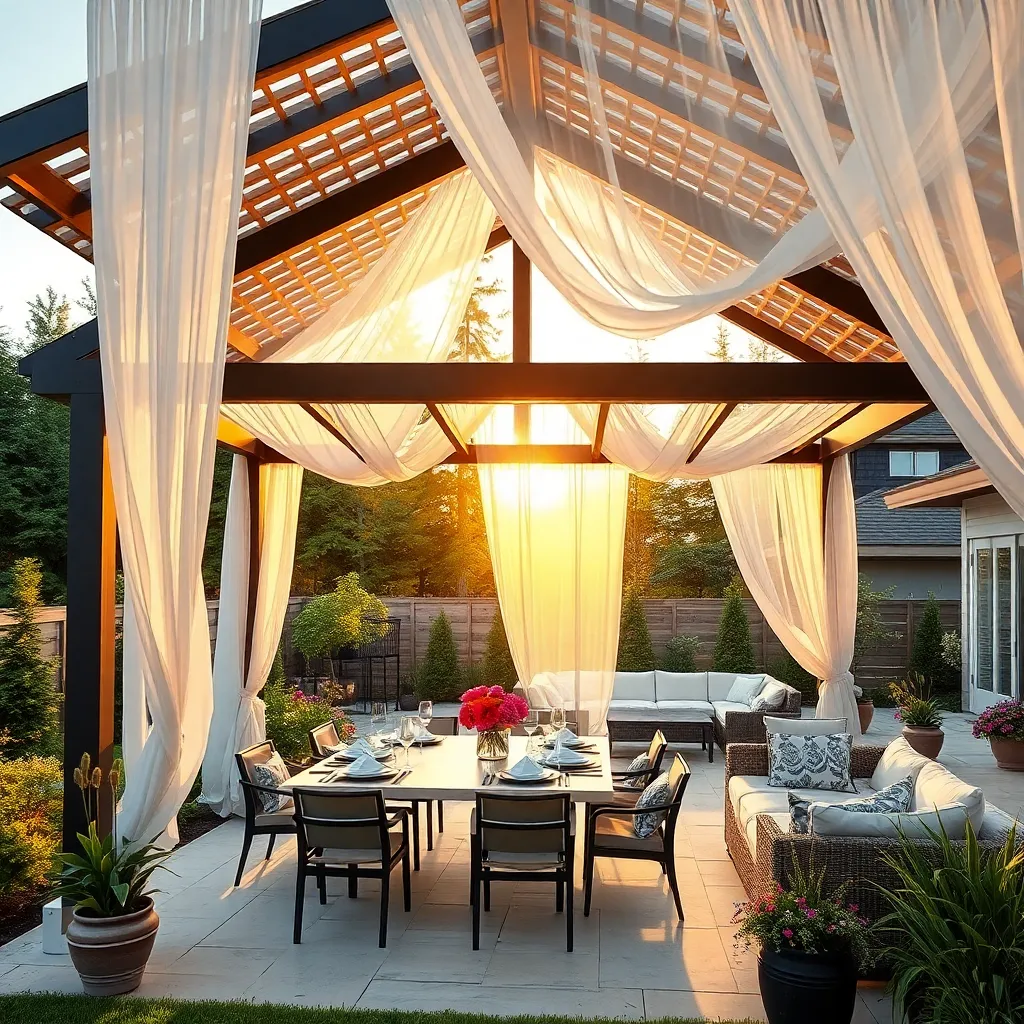
Incorporating a multi-functional pergola can transform your backyard into a versatile and stylish retreat. To start, consider using durable materials like cedar or pressure-treated pine, which are both resistant to weather elements. For a modern touch, opt for aluminum or vinyl options that require minimal maintenance. Design your pergola with adjustable louvers or retractable canopies to offer flexibility in light and shade, making it suitable for different activities throughout the day.
Think about the additional features that enhance functionality, such as integrating outdoor lighting or hanging planters for an aesthetic appeal. For advanced gardeners, consider adding climbing plants like wisteria or clematis to create a lush, natural canopy. Ensure your pergola is proportionate to your space by following standard dimensions, such as 10×10 feet for small areas or 16×20 feet for larger backyards. With these tips, your pergola can become the perfect gathering spot for family and friends, blending beauty with practicality.
Design Eco-Friendly Green Roofs
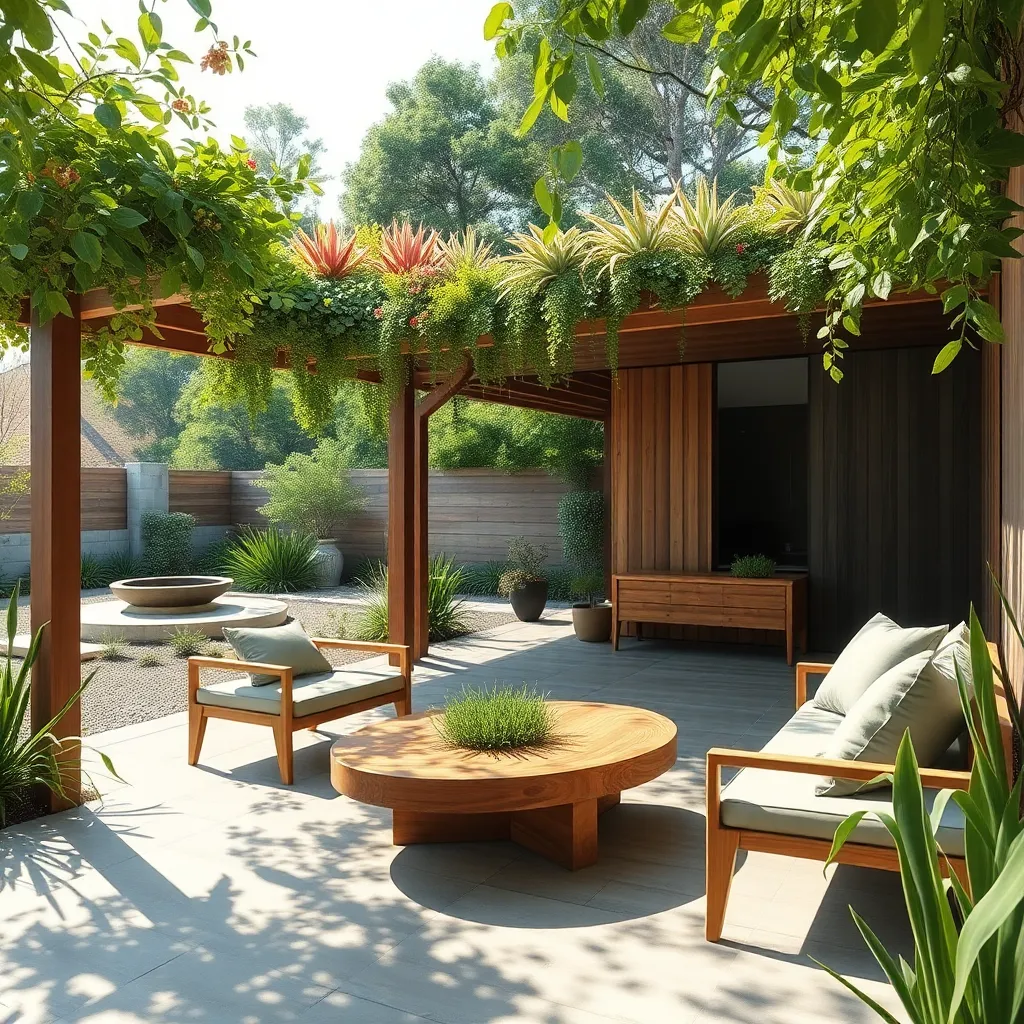
Installing a green roof can transform your backyard shelter into an eco-friendly oasis while improving insulation. To start, select hardy, drought-resistant plants such as sedums and succulents, which thrive with minimal maintenance. For a basic setup, use a layered system with a waterproof membrane, drainage layer, and 4-6 inches of lightweight growing medium. Ensure proper structural support by consulting with an engineer, as green roofs add significant weight.
For those ready to take green roofing further, consider incorporating rainwater collection systems to sustain the plants. Advanced designers might experiment with diverse plantings, like wildflowers or small grasses, to enhance biodiversity. Use modular trays to facilitate easier installation and maintenance. By carefully planning and implementing these elements, you can create a green roof that is not only beautiful but also beneficial to the environment.
Utilize Retractable Awning Systems
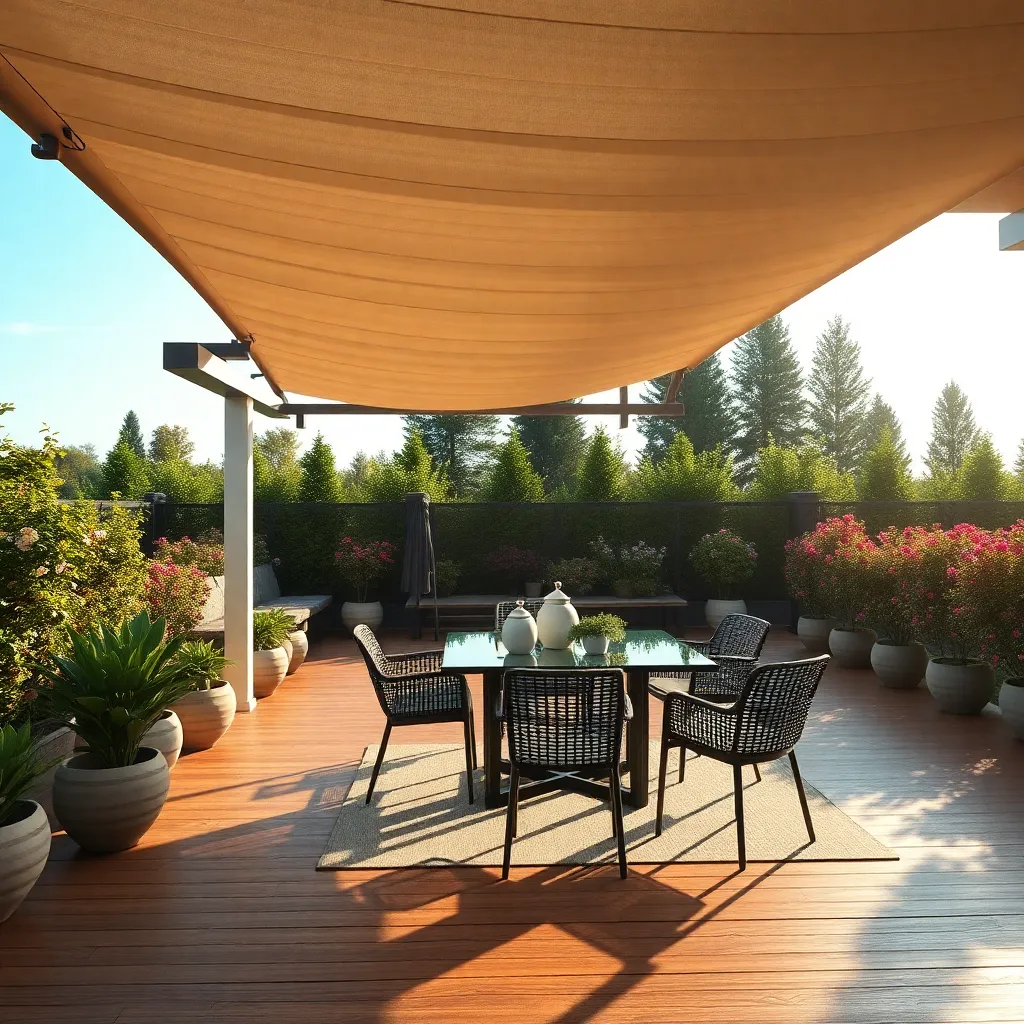
Retractable awning systems are a versatile solution for creating shaded areas in your backyard, offering flexibility and style. These systems allow you to extend or retract the awning as needed, providing shade during hot days and letting in sunlight when desired. For beginners, start by considering basic materials like acrylic fabrics and aluminum frames, known for their durability and weather resistance. If you’re looking for advanced options, consider motorized systems with smart controls, allowing you to adjust the awning remotely via smartphone apps.
When planning your awning installation, measure the area you want to cover accurately to ensure a perfect fit. Most systems are available in widths ranging from 8 to 20 feet, with projections up to 10 feet, so choose dimensions that suit your outdoor space. For a sleek and modern look, opt for awnings with minimalist frames and neutral-colored fabrics that complement various architectural styles. Remember to check local building codes and HOA regulations regarding outdoor structures to ensure compliance and avoid potential issues.
Add Built-In Outdoor Seating
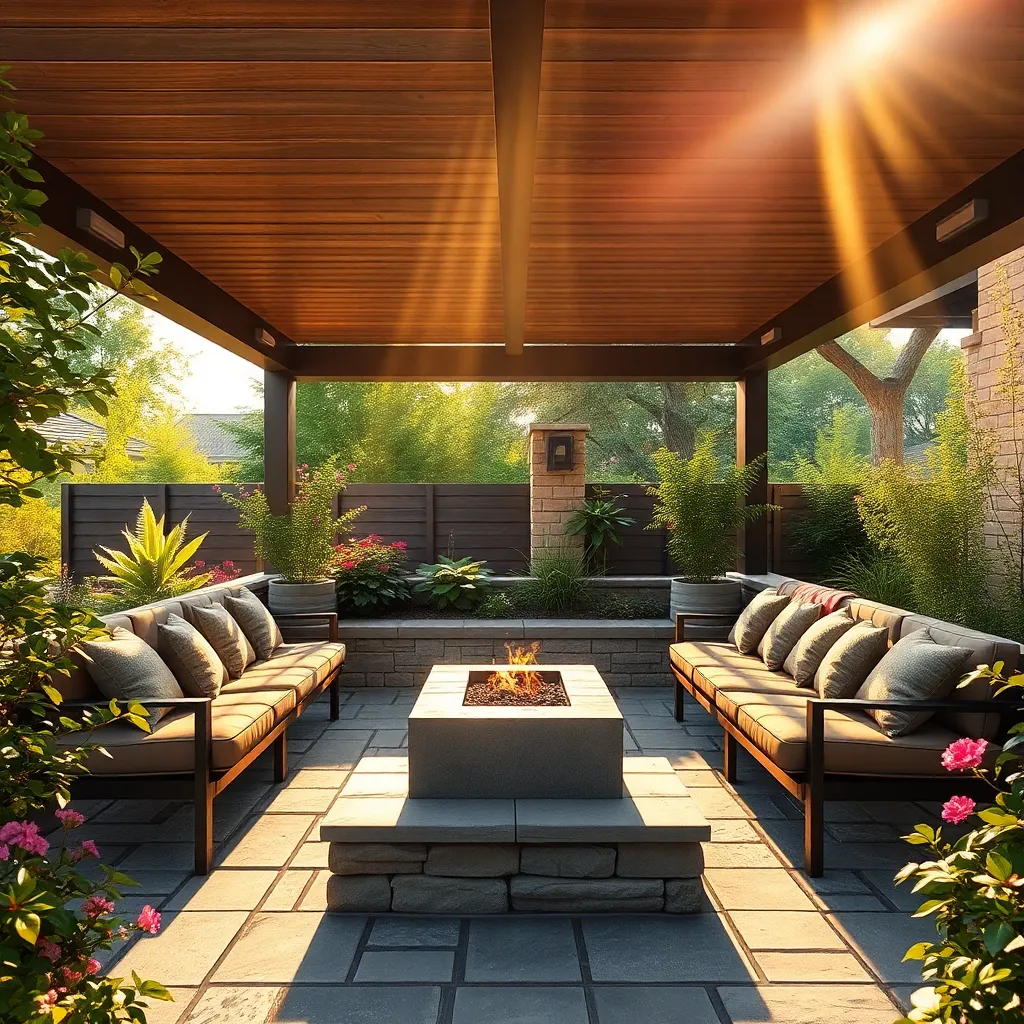
Incorporating built-in outdoor seating into your backyard structure is a fantastic way to maximize both space and comfort. Opt for durable materials like treated wood or weather-resistant composite decking to ensure longevity. For a cohesive design, match the seating style with other elements in your backyard, such as the pergola or gazebo. Beginners can start with simple bench designs, while more experienced DIYers might explore creating seating with integrated storage beneath, providing a two-in-one solution for clutter-free outdoor spaces.
To enhance comfort and aesthetics, consider adding cushions with waterproof fabric and using outdoor-friendly paints or stains to protect the seating from the elements. For a modern touch, incorporate sleek lines and minimalist shapes, and don’t shy away from adding built-in planters at the ends for a touch of greenery. For those who love hosting, ensure your seating design accommodates enough guests, typically allowing 18 to 24 inches per person. This not only makes your outdoor area more inviting but also adds a customized, luxurious feel to your space.
Create Cozy Fire Pit Areas
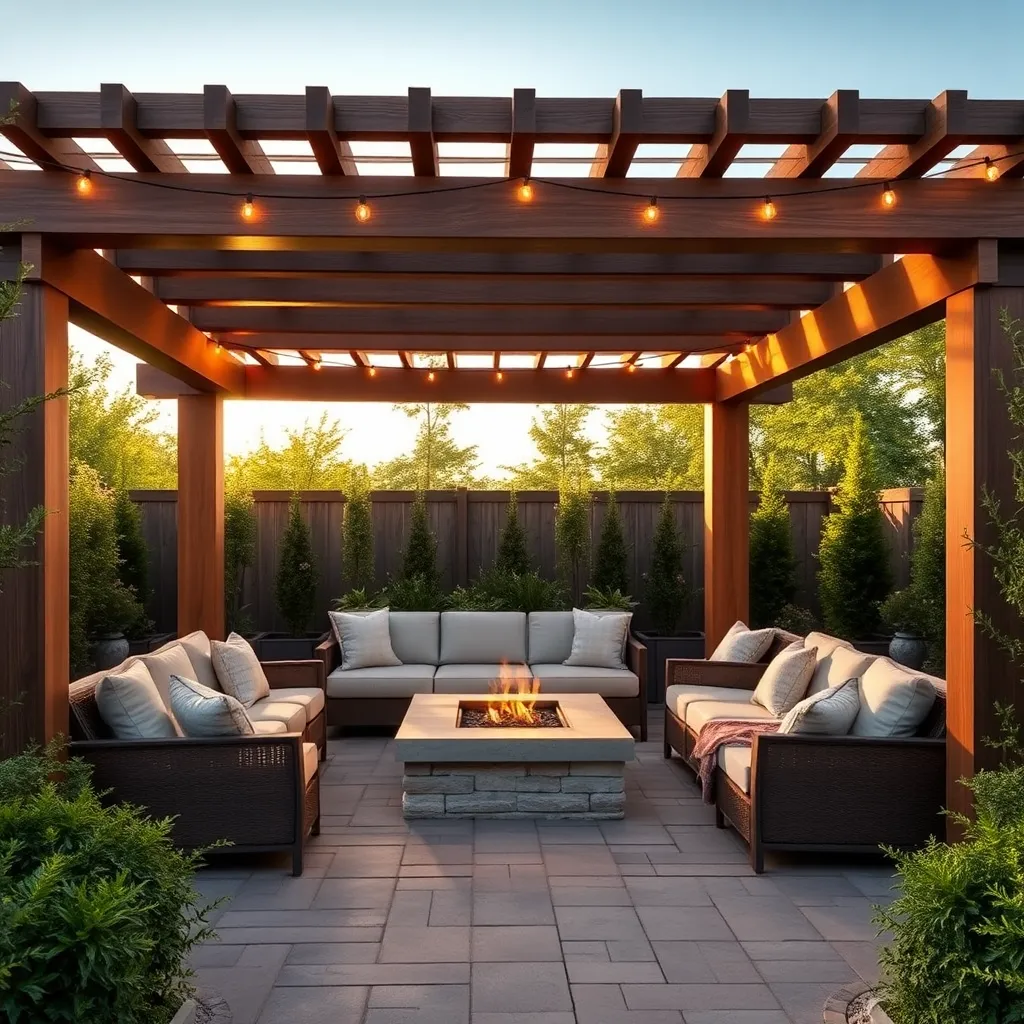
Transform your backyard into a welcoming retreat by creating a cozy fire pit area. Start by choosing a suitable location that’s at least 10 feet away from your home and any nearby structures for safety. Opt for durable materials like stone, brick, or heat-resistant concrete to construct a sturdy fire pit, ensuring it’s no larger than 36-44 inches in diameter for intimate gatherings. To enhance the aesthetic, consider surrounding the fire pit with gravel or pavers, which can also help prevent accidental fires by creating a non-flammable surface.
Integrate comfortable seating options to make the area inviting and functional. Arrange weather-resistant chairs or benches in a semi-circle around the fire pit to foster conversation and connection. For a more permanent solution, install built-in seating using pressure-treated wood or composite materials. Don’t forget to add cushions and throws for added comfort and warmth on cooler nights. For a personal touch, incorporate ambient lighting such as solar-powered lanterns or string lights to create a magical atmosphere that’s perfect for any outdoor gathering.
Implement Vertical Garden Walls
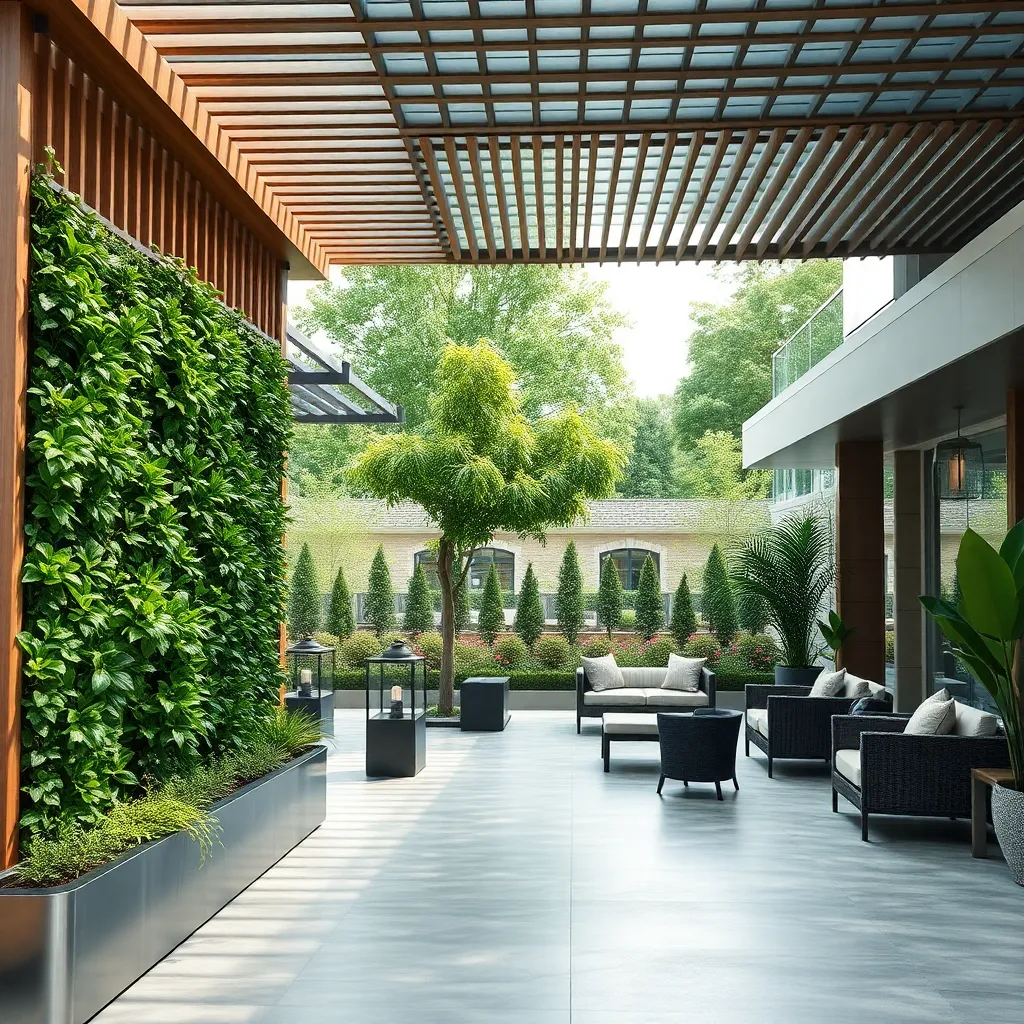
Imagine transforming a bare wall into a lush, green oasis by implementing vertical garden walls in your backyard. Vertical gardens maximize limited space and can be crafted from materials like wooden pallets, metal grids, or modular planting systems. For beginners, start with a simple wooden frame and fill it with potted plants or herbs. Remember to use lightweight potting mix and ensure your chosen wall can support the weight. Advanced gardeners can incorporate an automated watering system, ensuring each plant receives the perfect amount of moisture.
To enhance the aesthetic appeal, consider mixing a variety of plants such as ferns, succulents, and flowering species. Strategically place taller plants at the top and trailing plants near the bottom for a cascading effect. Ensure that your wall receives adequate sunlight, typically around 4-6 hours per day, depending on plant selection. Adding LED grow lights can be a savvy move for areas with limited natural light. Remember, successful vertical gardens not only beautify your space but also improve air quality and create a sense of tranquility in your backyard.
Blend Structures with Natural Scenery
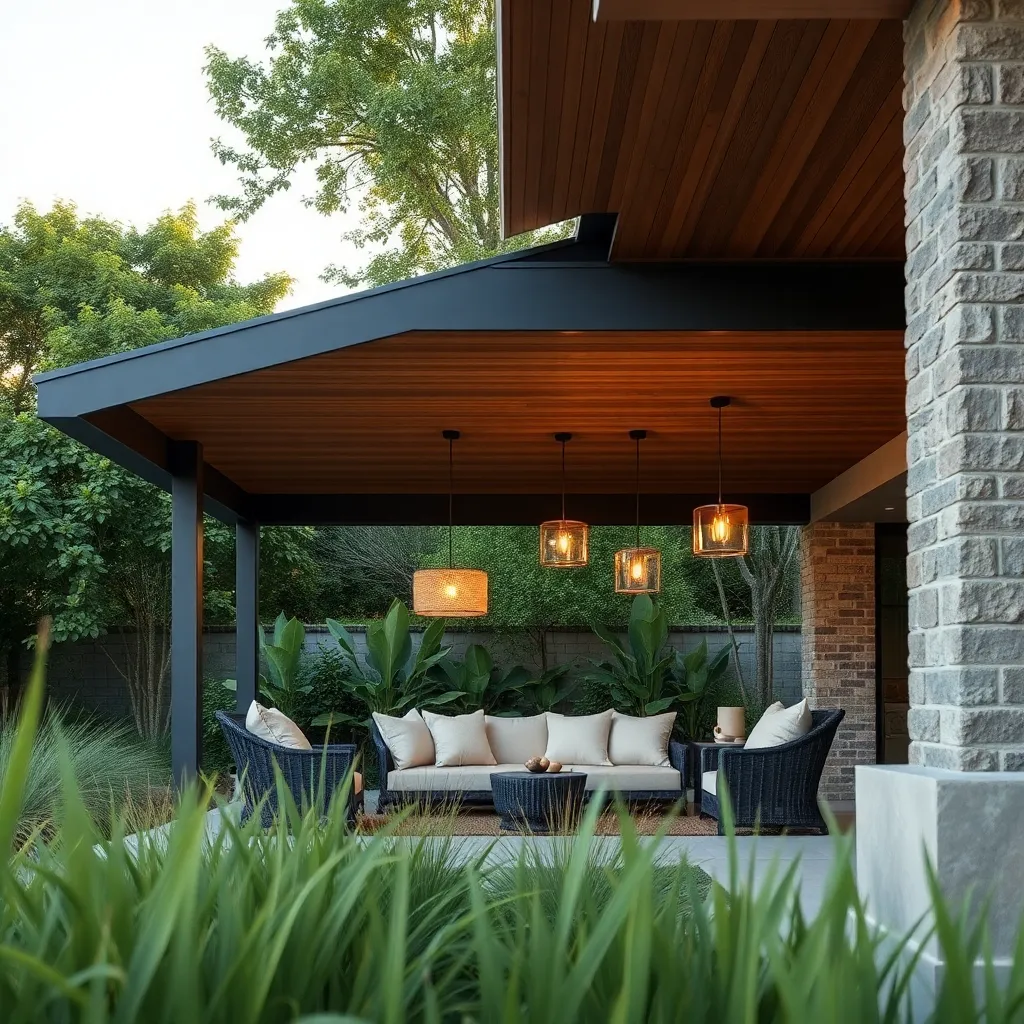
To seamlessly blend structures with natural scenery, consider using materials that complement the existing landscape. Opt for natural wood or stone finishes, which effortlessly mimic nature’s textures and hues. For a truly immersive experience, incorporate living plants around the structure. Climbing vines or hanging planters can be used to soften the edges and create an organic flow between the built environment and the natural world. Beginners can start with simple wooden pergolas, while advanced gardeners might explore green roofs for a more integrated approach.
Design elements such as curved lines and earth-toned colors can help the structure feel like an extension of the natural surroundings. Positioning is key—place your structure in harmony with existing features like trees or water bodies to enhance the visual continuity. For added sophistication, install glass panels to reflect the greenery around, creating a dynamic interplay of light and shadow. Advanced enthusiasts might consider using sustainable materials like bamboo or recycled metal to not only blend with nature but also to embrace eco-friendly practices.
Opt for Minimalist Gazebo Designs
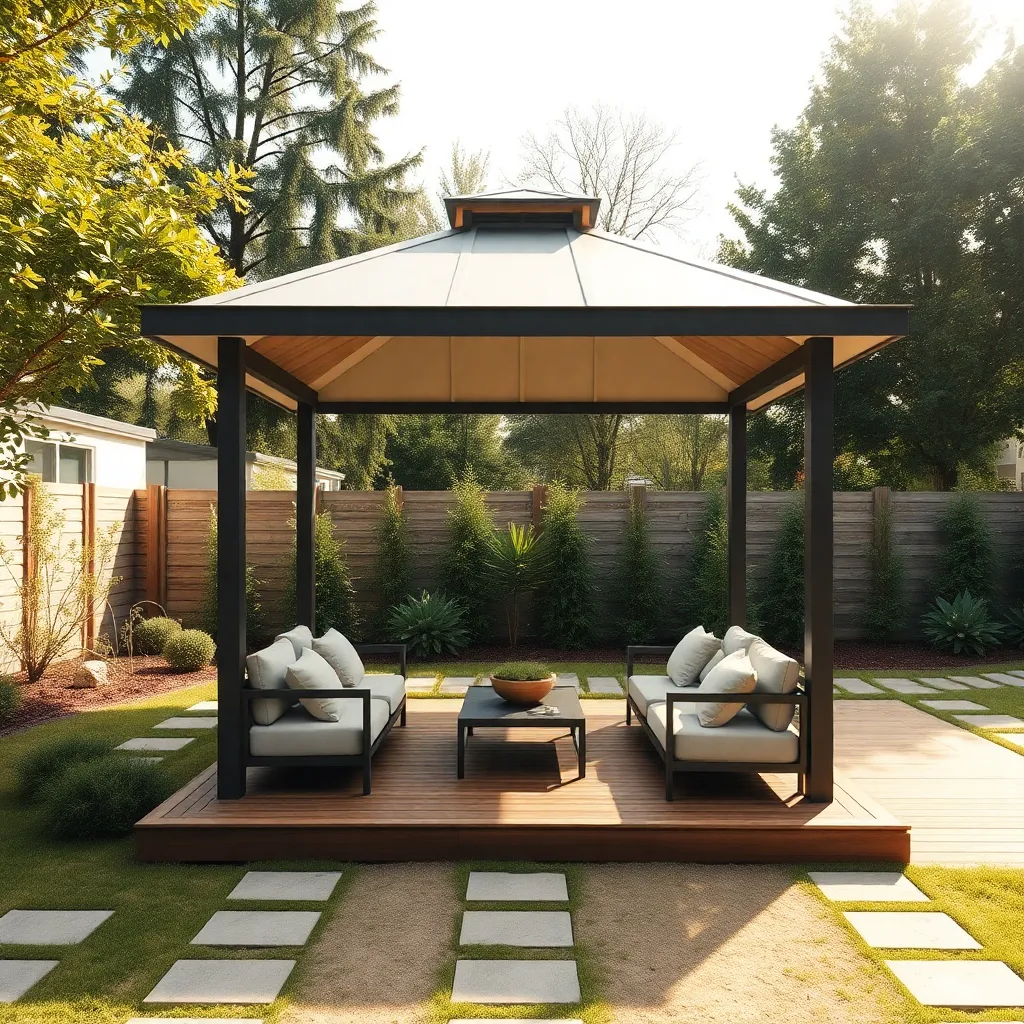
When considering a minimalist gazebo design, focus on simplicity and functionality. Opt for clean lines and neutral tones to create a versatile space that complements any backyard. Choose materials like aluminum or treated wood for durability and low maintenance. For a sleek look, incorporate a flat or gently sloped roof that provides adequate protection without overwhelming the space. Beginners can start with a pre-fabricated kit, which simplifies construction and ensures a polished finish.
Advanced DIYers can explore custom designs, integrating elements like adjustable louvers or retractable panels to control sunlight and airflow. Consider incorporating built-in seating or planters to enhance the space without cluttering it. Keep dimensions modest, such as a 10×10 foot space, to maintain intimacy and easy integration into your garden. With these tips, your minimalist gazebo can become a serene retreat that elevates your backyard aesthetic.
Install Modular Outdoor Kitchens
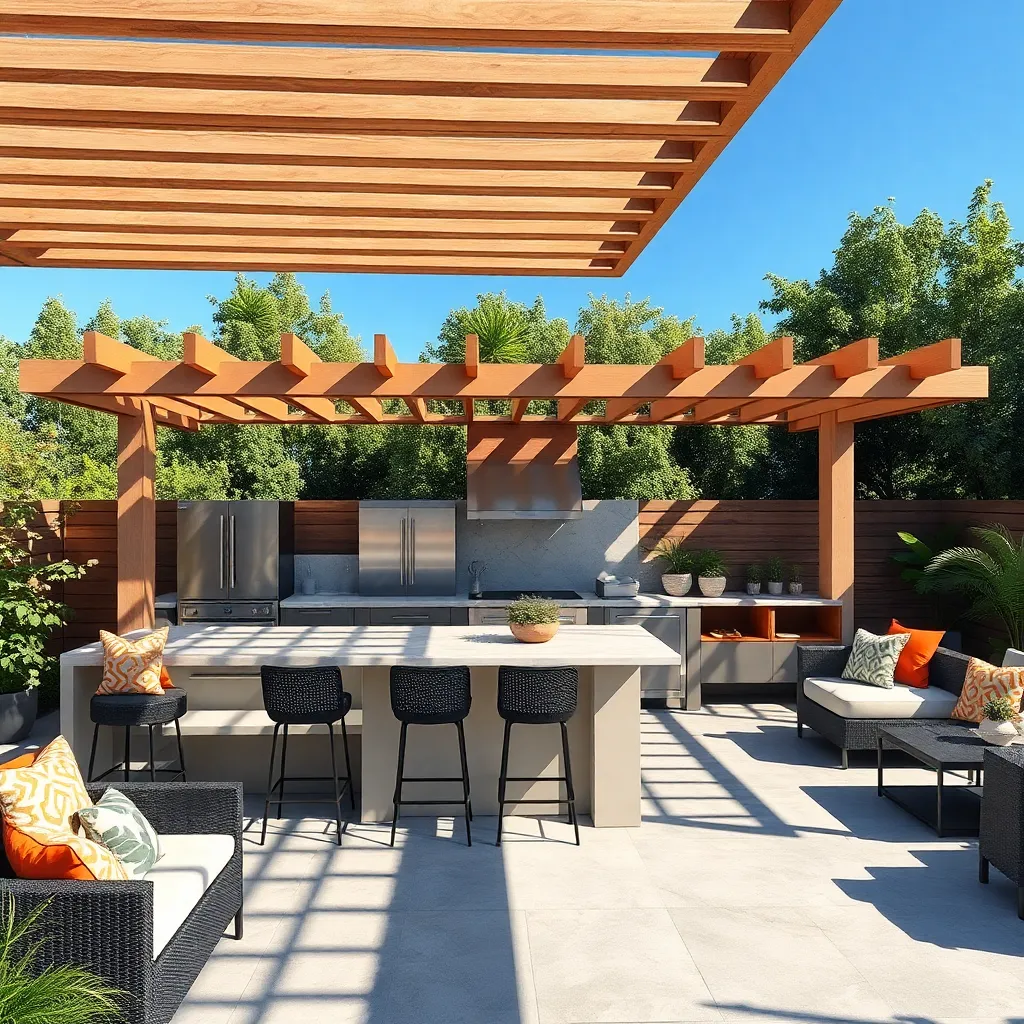
Transform your backyard into a culinary haven by installing a modular outdoor kitchen. Start with essential components such as a grill, sink, and storage units, which can be expanded as your needs grow. Opt for durable materials like stainless steel and weather-resistant cabinetry to ensure longevity. For beginners, consider prefabricated modules that simplify installation and offer flexibility in layout and design.
For a more personalized touch, integrate countertops made from granite or concrete, which provide both style and resilience. Advanced enthusiasts may explore adding a pizza oven or a smoker to enhance cooking options. Ensure proper ventilation and consider installing a pergola or other shade structures to protect your kitchen from the elements. By carefully planning your layout, you can create a seamless flow between cooking and dining areas, making outdoor entertaining both enjoyable and efficient.
Choose Sustainable Building Materials
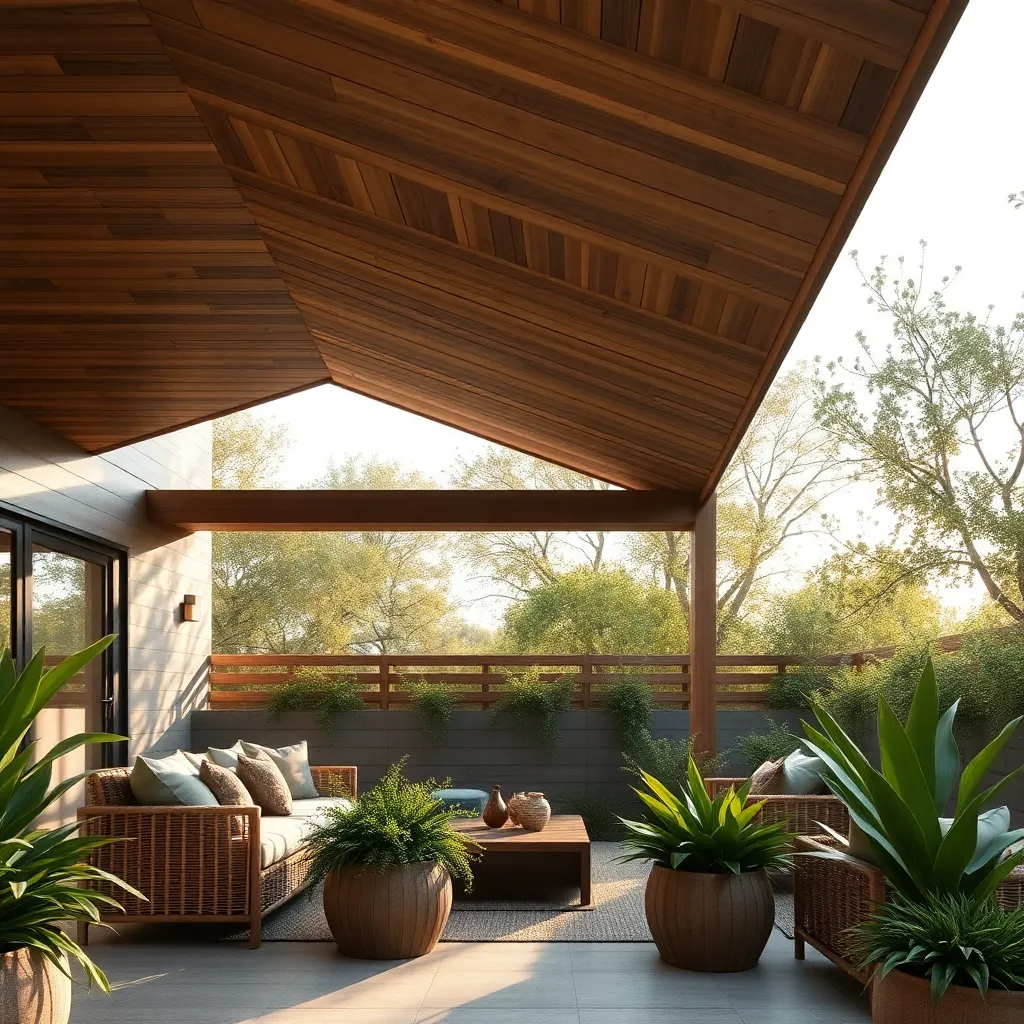
When selecting materials for your outdoor shelter, prioritize sustainability by opting for reclaimed wood or bamboo. These materials are not only eco-friendly but also add a rustic charm to modern designs. Reclaimed wood can be sourced from old barns or pallets, offering a unique weathered look that complements any backyard. Bamboo is an excellent choice for its rapid growth and strength, ideal for constructing pergolas or gazebos.
For a more advanced approach, consider integrating solar panels into your shelter’s design. This can provide lighting and power for outdoor appliances, enhancing functionality while reducing energy costs. Additionally, use permeable pavers for the flooring to manage rainwater runoff effectively, promoting sustainable water use. These small design choices can significantly impact your backyard’s environmental footprint, making your project both beautiful and responsible.
Maximize Space with Lofted Sheds
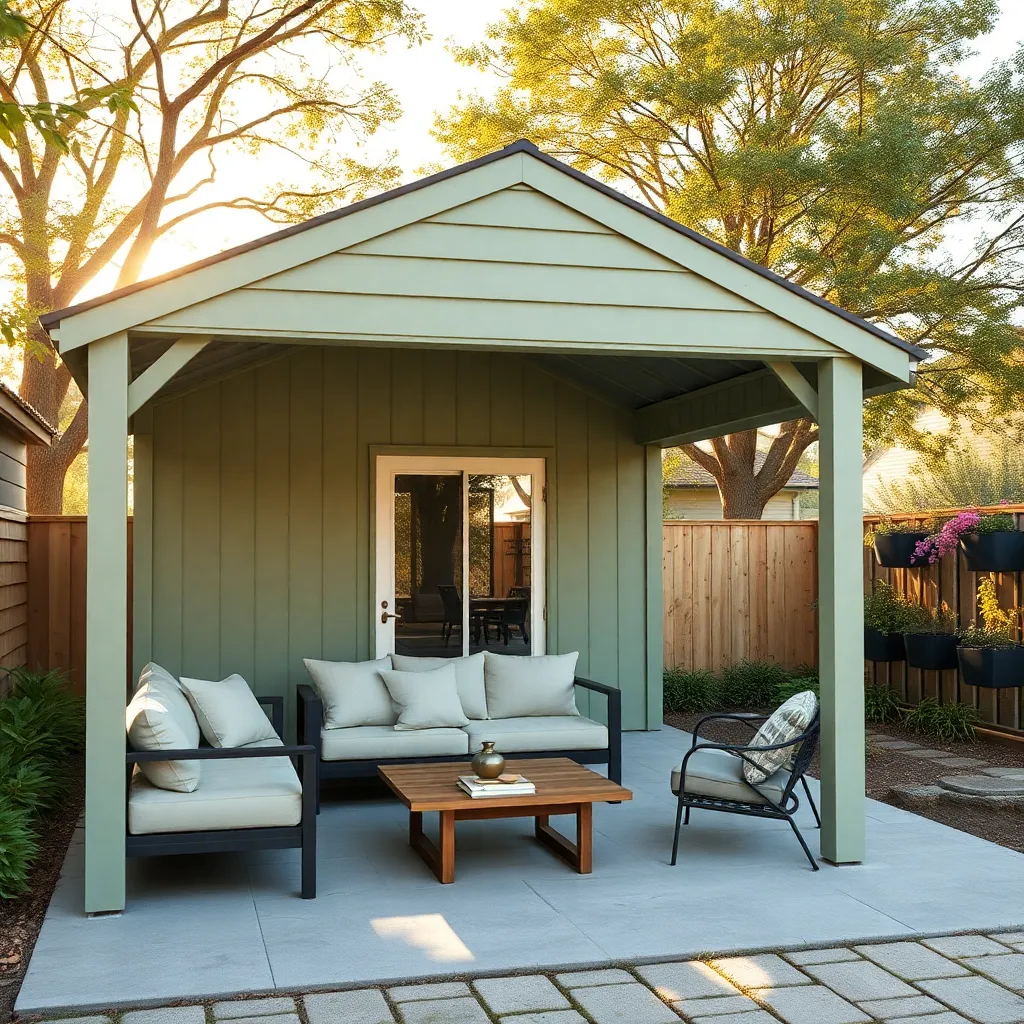
Lofted sheds are a smart way to maximize vertical space in your backyard, providing both storage and a stylish addition to your outdoor area. By incorporating a loft, you can utilize the often-overlooked height of the shed for storing seasonal items, garden tools, or sports equipment, freeing up floor space for other uses. Consider materials like durable wood or metal for the structure, ensuring longevity and resilience against weather conditions. For beginners, starting with a prefab kit can simplify the process, offering detailed instructions and pre-cut materials for easier assembly.
Advanced gardeners and DIY enthusiasts can customize their lofted sheds to include skylights or windows, enhancing natural light and ventilation. This not only makes the space more functional but also creates an inviting environment for hobbies or as a mini workshop. Ensure the shed’s foundation is solid and well-drained to avoid moisture issues, using gravel or concrete as a base. For those seeking a unique touch, add a small porch or deck area to extend the shed’s usability as a relaxing retreat or potting area.
Incorporate Transparent Roof Panels
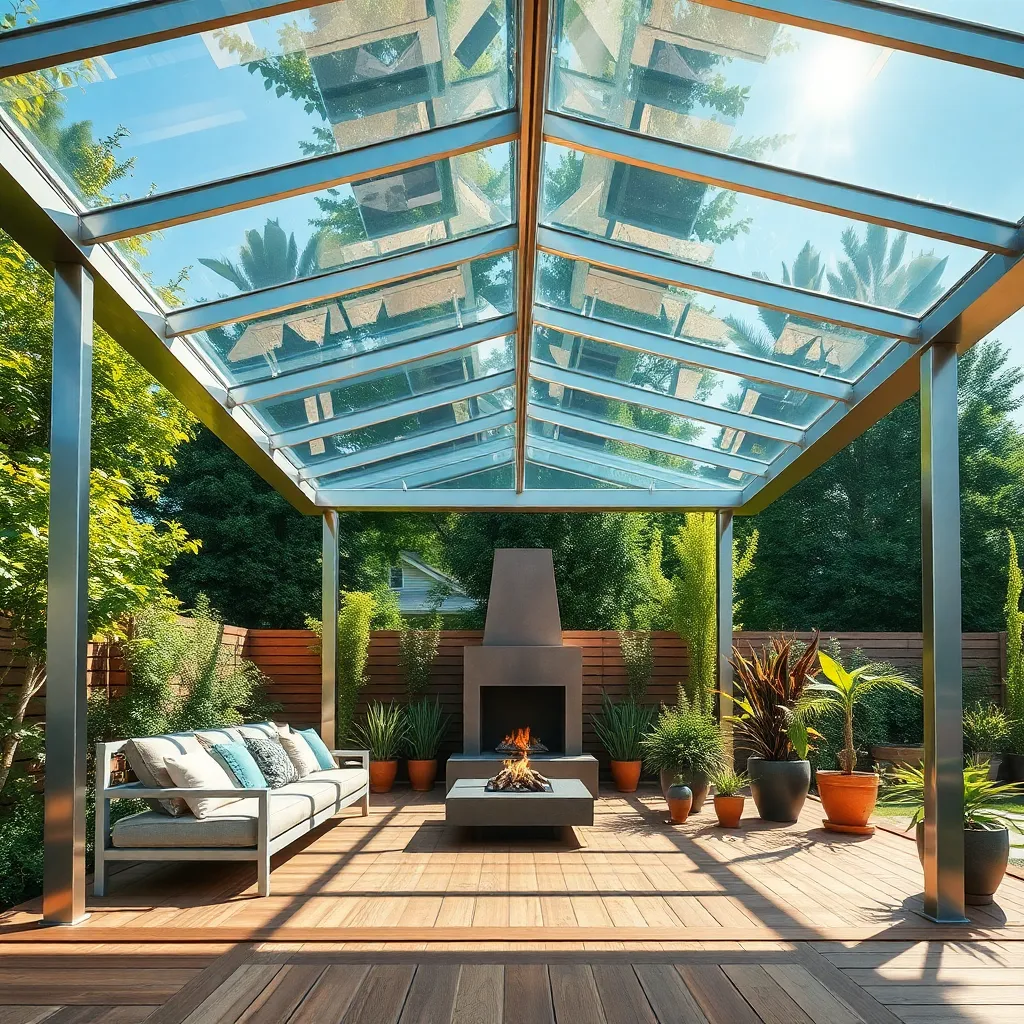
Incorporating transparent roof panels is a fantastic way to bring natural light into your outdoor shelter while providing protection from the elements. Polycarbonate and acrylic panels are popular choices, as they offer durability and UV protection. Beginners can start by replacing a portion of the existing roof with clear panels, ensuring they are securely fastened to withstand wind and rain. For those with a bit more experience, designing a custom framework to fit these panels can create a modern and open feel.
Consider the position of your structure to maximize sunlight exposure; this is especially important if you plan to use the space for plants or as a reading nook. Opt for panels with coatings that reduce glare and heat, making the area comfortable during hot days. When installing, ensure you have a slight roof pitch to allow water runoff, preventing leaks and damage. By following these steps, even novice DIYers can create a stylish, light-filled retreat in their backyard.
Build Stylish Privacy Screen Panels
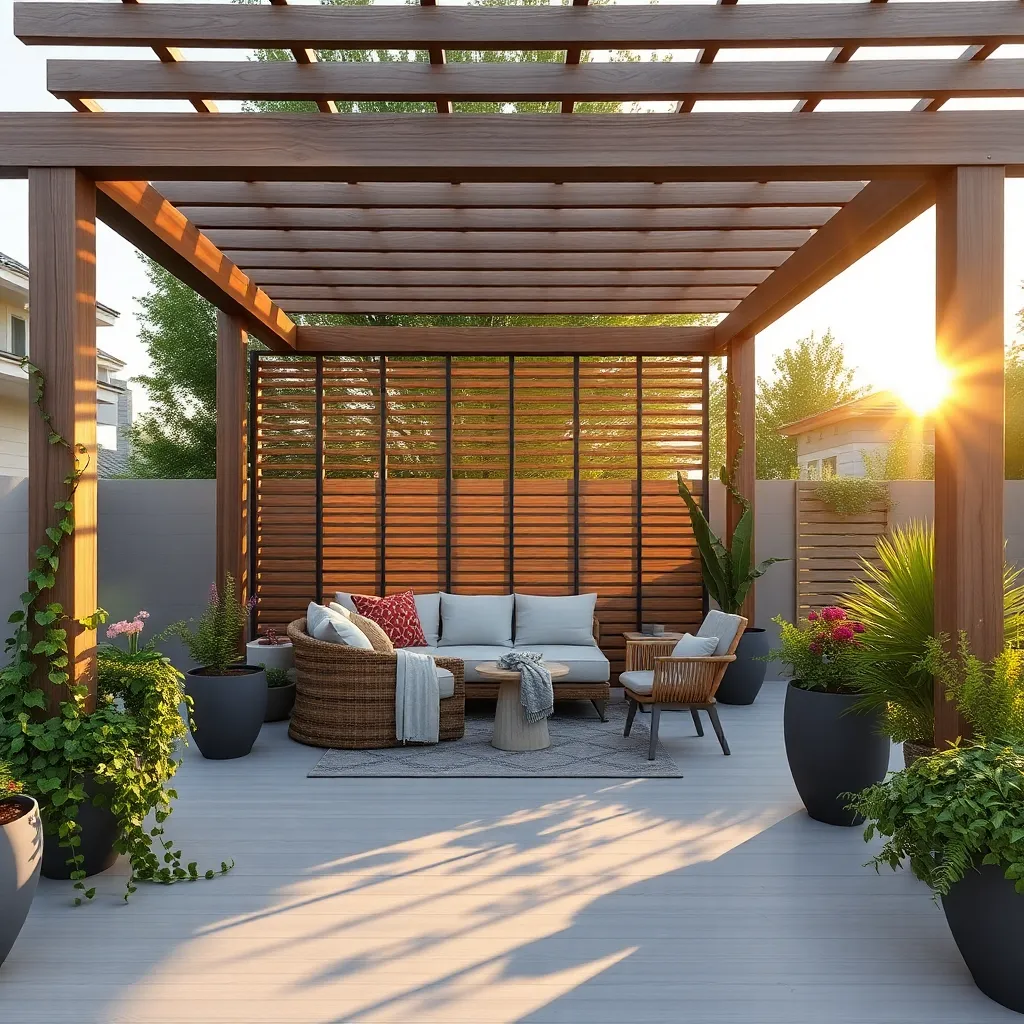
Enhancing your backyard with stylish privacy screen panels can transform your outdoor space into a secluded retreat. Start by selecting materials that complement your existing structures; popular choices include wood, metal, and composite materials. For beginners, cedar or redwood are excellent options due to their durability and natural resistance to weather. Consider lattice panels or slatted designs for a modern look, ensuring they are tall enough—around 6 to 8 feet—to provide adequate privacy without overwhelming the space.
For a more advanced touch, incorporate artistic elements such as laser-cut metal panels or stained glass inserts to add visual interest. Use a simple post-and-frame construction technique to anchor your panels securely, ensuring they withstand the elements. If you’re handy with tools, try adding adjustable louvers to control sunlight and airflow. Remember to measure your space carefully and plan your layout to maintain both functionality and aesthetics. By blending practicality with style, your privacy screen can become a stunning focal point in your backyard.
Enhance Ambiance with Solar Lighting
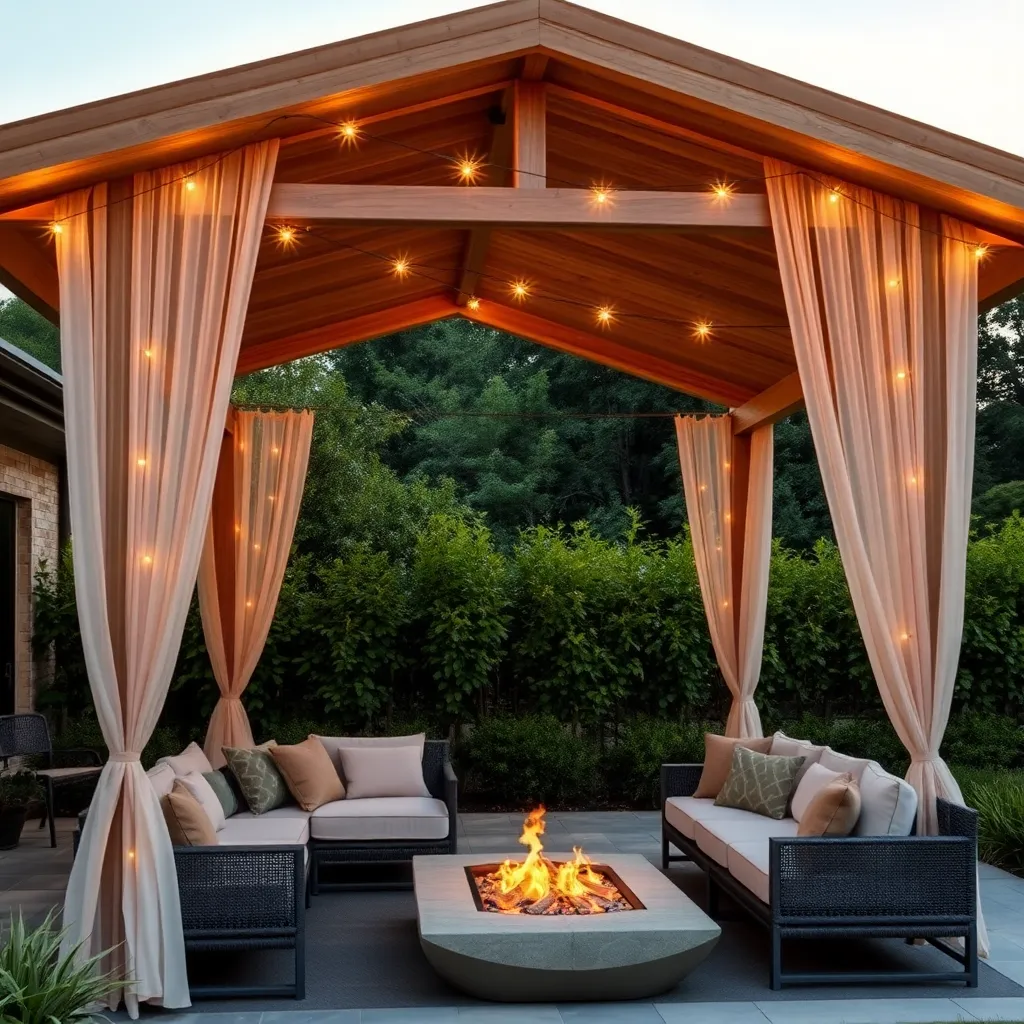
Solar lighting is a fantastic way to enhance the ambiance of your backyard while being environmentally friendly. Start by selecting solar lights that match your outdoor décor, such as sleek stainless steel fixtures for a modern look or rustic lantern styles for a cozy vibe. Position lights strategically along pathways, around seating areas, or within garden beds to create a warm, inviting atmosphere. For beginners, an easy approach is to use stake lights that simply push into the ground, ensuring they receive ample sunlight during the day.
For those looking to elevate their lighting setup, consider installing solar string lights or hanging lanterns from pergolas or trellises. These options not only provide illumination but also add a decorative element to your outdoor structure. Advanced enthusiasts can experiment with solar-powered spotlights to highlight architectural features or specific plants, creating dramatic effects at night. Remember to check the solar panel orientation and battery capacity to ensure consistent performance year-round, helping you enjoy your outdoor space long after the sun sets.
Conclusion: Creating Beautiful Outdoor Spaces
In exploring the ’14 Modern Backyard Structures Ideas for Your Next Project,’ we’ve delved into concepts that mirror the dynamics of thriving relationships. From creating personal nooks for reflection to crafting communal spaces that foster togetherness, each structure symbolizes a key aspect of maintaining healthy connections. We’ve seen how outdoor kitchens can ignite culinary collaborations, pergolas offer shaded retreats for intimate conversations, and garden offices inspire productivity and personal growth.
To put these ideas into action, choose one structure that resonates with your relationship goals and start planning its integration into your backyard. This tangible step can serve as a catalyst for deeper connection and shared joy with your partner or loved ones.
Remember, relationships, like backyard projects, flourish with creativity, commitment, and care. Save this article for inspiration and guidance as you embark on your journey towards relational success. As you embrace these concepts, envision a future where your backyard and relationships bloom in harmony, creating spaces of love, support, and shared dreams. Let this article be your companion in nurturing bonds that are as enduring and beautiful as the spaces you create together.
